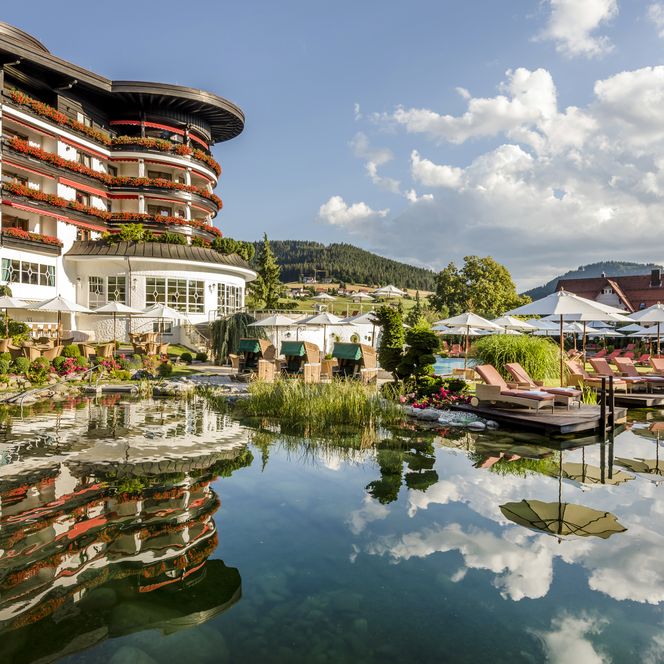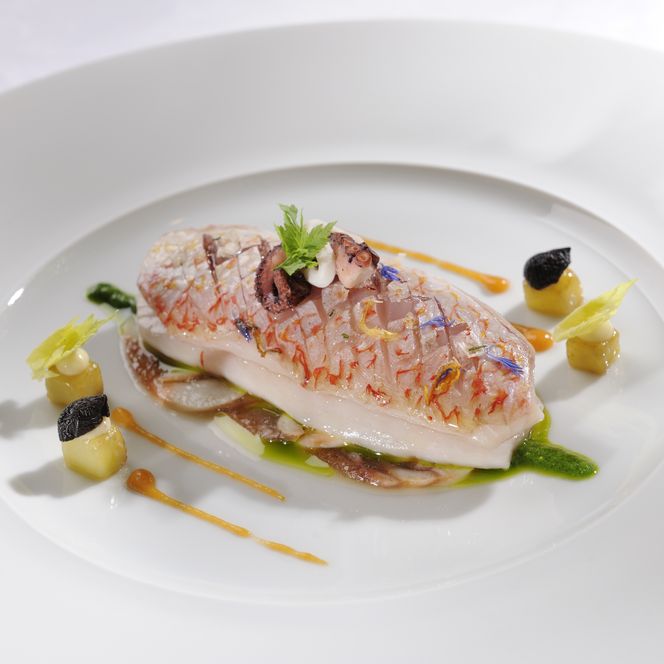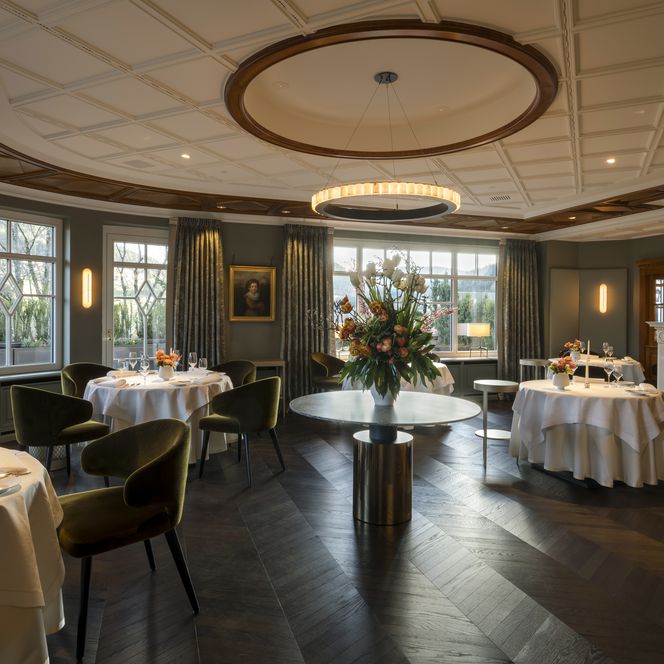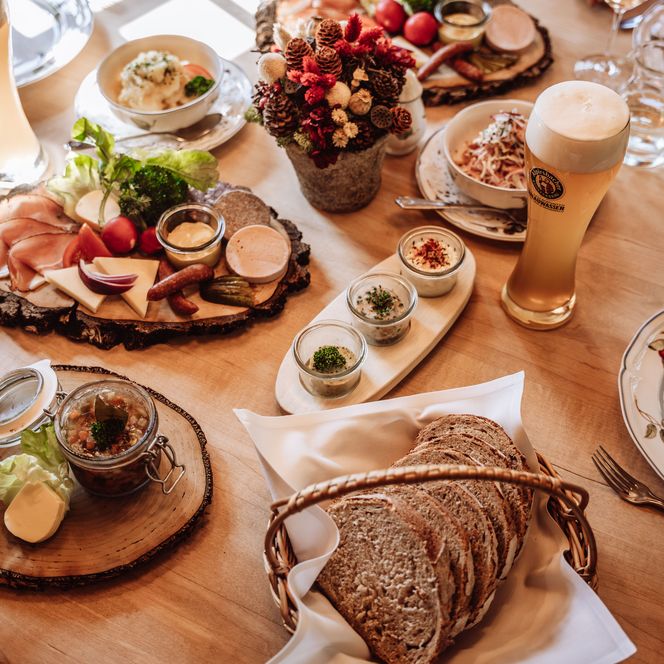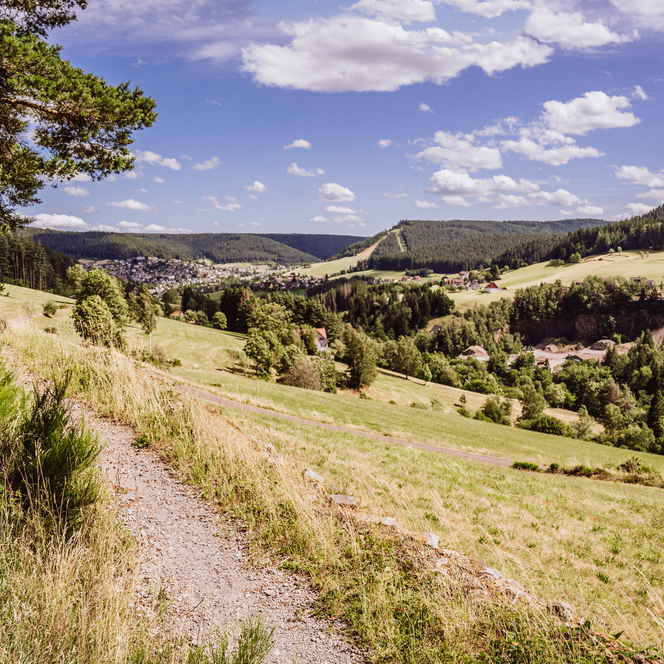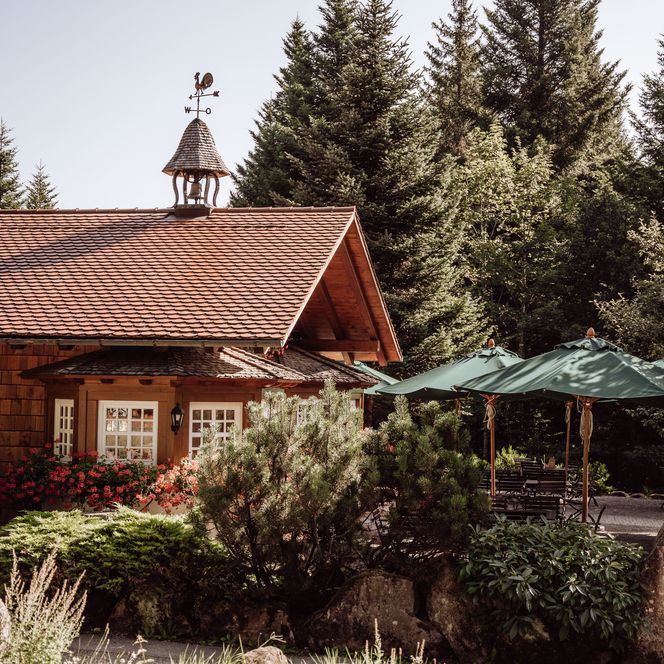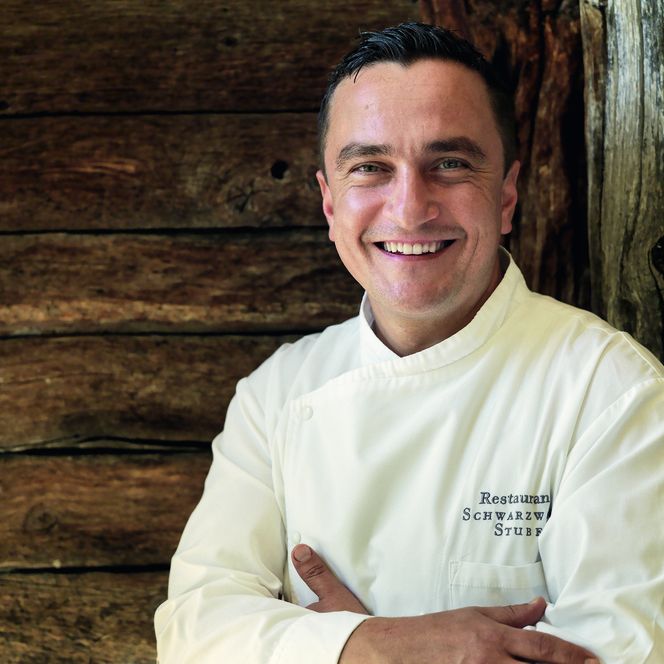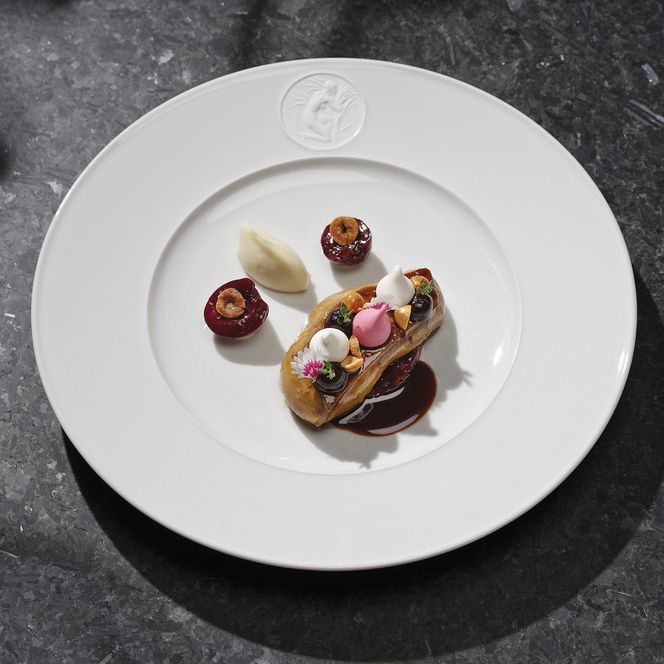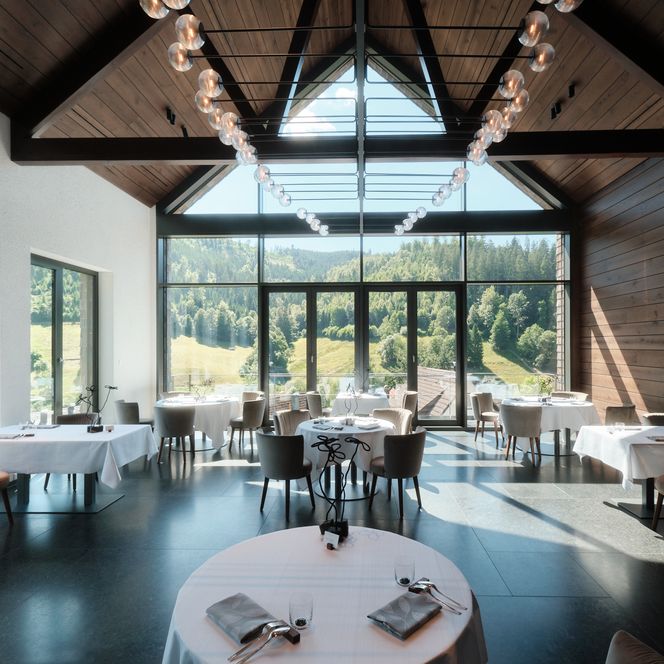My mind is already on my evening meal at the Restaurant Bareiss — and the need to conserve stomach space — but Anja insists I first try some rustic fare. Out of her knapsack come local lamb sausage, homemade elderflower drink, and a pat of butter to mix with the herbs we’ve gathered. Simple, delicious, and on a raw autumn afternoon, too good not to devour.
In the Black Forest, it seems, you can’t move far without eating. The Bareiss is part of hotel of the same name, where even the spa has sorbets and muesli on hand in case you get peckish between breakfast and lunch. In mid-afternoon the hotel’s dining room tables groan beneath an insulin-troubling display of cakes to see you through those fallow hours before dinner. And the same goes for the hiking. The next day the sky has been scrubbed clear of clouds and I set off alone for a walk along one of the forest’s “culinary trails” (Geniesserpfade), where food is never far away, and no hiker goes hungry. My goal is the Sattelei Hut, a forest cabin also owned by the Hotel Bareiss that could have been sketched by the Brothers Grimm.
Myths are on my mind as I pass a farm that once belonged to a local family of natural healers, the Morloks. Their reputed powers ranged from locating lost cattle to curing terminal diseases; the mystery only deepened when builders doing recent renovations unearthed an 18th-century tome full of notes and recipes in German, Hebrew and Latin, and a collection of labelled tinctures.
I’m soon to require magical intervention myself. The path climbs out of the Mitteltal hamlet and burrows into a tunnel of spruce trees. I am alone, with only the thrumming of distant woodpeckers for company. It’s a straightforward walk to the hut — most of the hiking in the Black Forest is invigorating rather than gruelling; these are hills, not alps. But in the woods it’s easy to lose your bearings. One turning is starting to look much like the last, I haven’t seen a fingerpost for a while and there’s no trail of breadcrumbs. As I’m about to attempt a Morlokian charm for lost hikers, the trees part and there is the Sattelei Hut with its shingle roof and cockerel weathervane. Autumn sun floods the terrace and the waistcoated waiter is ferrying out fistfuls of beer tankards. It’s time for lunch.
